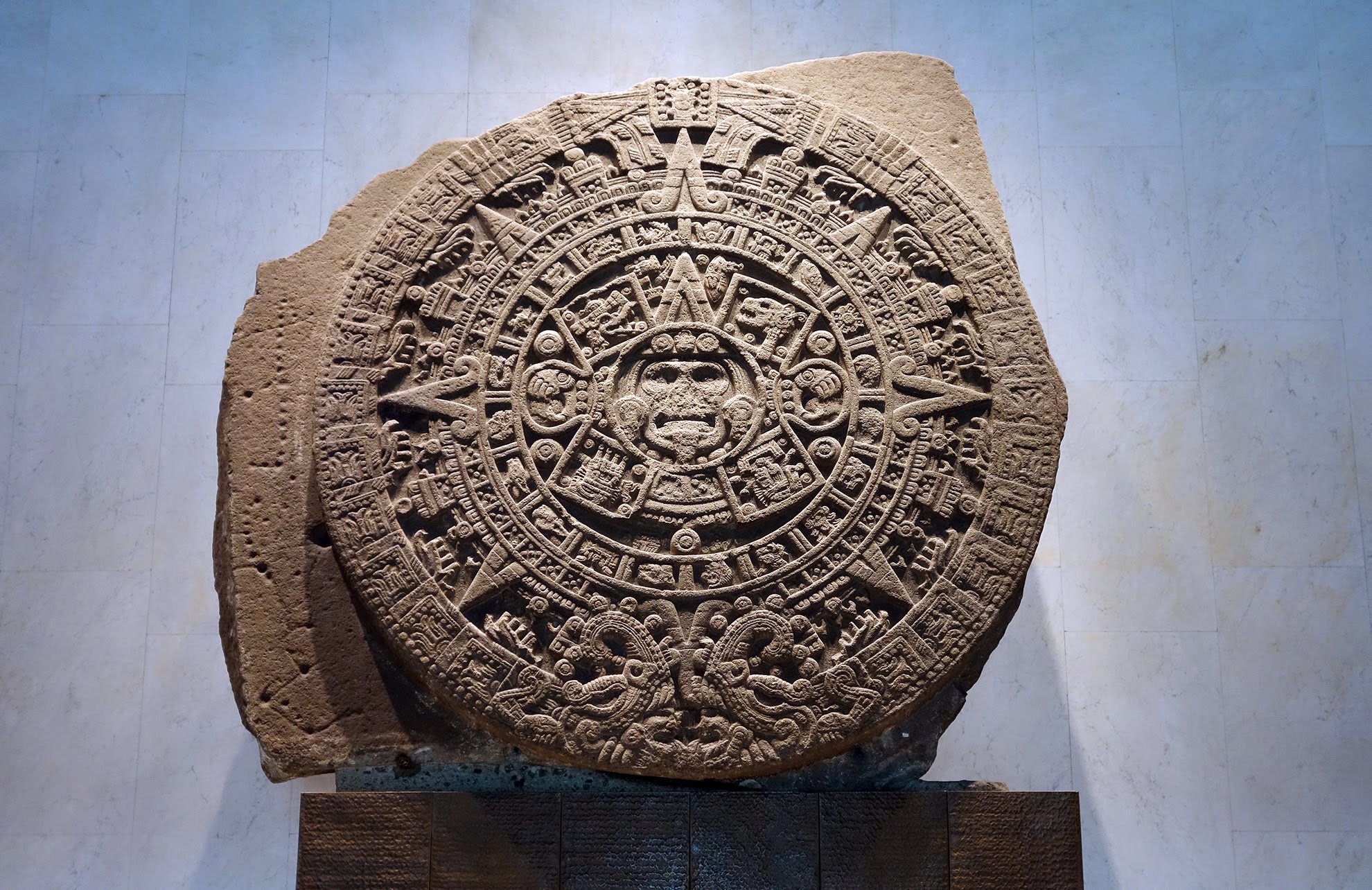Feliz Cinco de Mayo! :)
Time for one of the greatest and most fascinating artifacts of the Mexica culture - The Sun Stone, also known as Stone of the Five Eras. Sometimes it is also erroneously called the Aztec calendar stone. It is a late post-classic Mexica sculpture housed in the National Anthropology Museum in Mexico City, and is perhaps the most famous work of Aztec sculpture.
Shortly after the Spanish conquest, the monolithic sculpture was buried in the Zócalo, or main square of Mexico City. It was rediscovered on December 17, 1790 during repairs on the Mexico City Cathedral. Following its rediscovery, the calendar stone was mounted on an exterior wall of the Cathedral, where it remained until 1885.
The sculpted motifs that cover the surface of the stone refer to central components of the Mexica cosmogony. In the center you can see the face of the solar deity, Tonatiuh, which appears inside the glyph for "movement", the name of the current era. The central figure is shown holding a human heart in each of his clawed hands, and his tongue is represented by a stone sacrificial knife.
The exact purpose and meaning of the Calendar Stone are unclear. Archaeologists and historians have proposed numerous theories, including its use as a calendar, some religious significance (it could been used as a ritual altar) or maybe geographical significance. Some scholars also say it may have had a political aspect - it may have been intended to show Tenochtitlan as the center of the world and therefore, as the center of authority.


 Unknown Artist
Unknown Artist